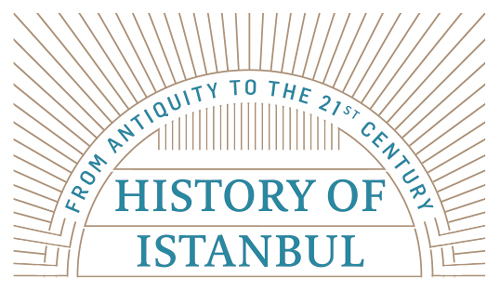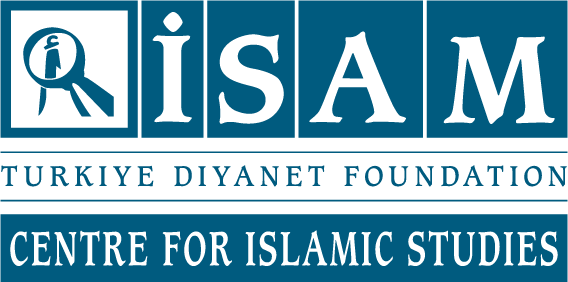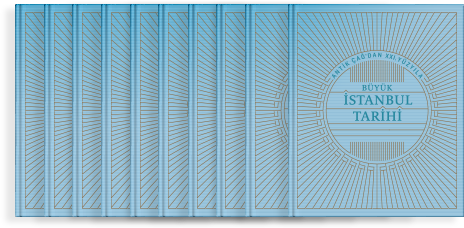This chapter tackles the relationship of the church with the traditions of the Armenians in Istanbul in the twenteeh century. The founding of the Turkish Republic brought about a transformation in this relationship. However, the Armenian Church and Armenian Patriarchate of Istanbul have always been leading factors which determine the religious life of the Armenians. The objective of this study is to argue that the church and its traditions protect the integrity and existence of the Armenians in Istanbul.
In order to understand the changes of the past century one must first understand the general structure of the Armenian Church, and the formation of the Ottoman State – this matter is covered in the section titled The Armenian Patriarchate of Istanbul. The following section looks at the church-community relationship, in view of the theology of sacraments; this is what determines the religious life of the Armenians of Istanbul. In the same way, funeral rituals and feasts are evaluated under separate headings. Finally, the status of Catholic Armenians in Istanbul is discussed.
The Armenian Patriarchate of Istanbul
/1-surp-kevork-kilisesi.jpg)
In the hierarchy of the Church, the patriarch is of the same spiritual significance as the bishop. However, in terms of administrative tasks, he has the highest rank. That is why it is in the same level with the catholicos. However, the traditionally accepted view in the Armenian Church tends to be that the catholicos is of a higher rank. On the other hand, in Christian theology, there is only one leader. Ignatius of Antioch (b. 30 - d. 107 AD) states that there is one bishop in the universal church1 but he also mentions three fundamental levels of hierarchy (diyakon - deacon, papaz - priest and piskopos - bishop). These ranks are taken with the sacrament of priestly consecration. The administrative duties, such as archbishop, patriarch and catholicos, were developed subsequently and the rites of administration are not sacramental. The Catholic Church turned the consecration of the pope – the only accepted spiritual leader in Catholicism - into a dogma by accepting it as sacramental. However, in the Armenian Church, the issue of unique spiritual leadership is still controversial.2
The transition from the Ottoman State to the Turkish Republic in the 20th century had a profound impact on the Istanbul Armenians and the administrative structure of the Patriarchate.
When, following the Lausanne Peace Negotiations in 1922, Zaven I. Yeğyayan (1913-1915, 1919-1923), the patriarch during this transitional period, fled abroad, the government announced that it would not interfere with the patriarchal elections. In accordance with the 1863 Nizamnâmesi,3 Kevork Arslanyan became the patriarch (1922-1927 and 1944-1951).4
Because it was not the subject of further regulation, the administration of the Patriarchate was carried out according to the existing regulations and laws of the Republic. While the commissions were considered to be no more valid during the process, the 1934 Vakıflar Kanunu (law on waqfs) and the subsequent amendments were formed independently.5 The synod continued to exist, however institutions other than the Patriarchate were legal entities and were transformed into trustee-board managed waqfs.
/2-surp-kevork-kilisesinin-avlusundaki-ayazma.jpg)
In 1950, the Board of Ministers passed a decree for an election, and Karekin Haçaduryan was elected. According to this, the permanent synod which had earlier existed was to be formed again. However, the civil and spiritual delegates to the election (the election committee) would be determined by two members of the public from the community of each church, with the pastor of the church providing the delegates. The conditions of the candidate patriarchs were also stated in the decree. Karekin Haçaduryan, who triumphed over five candidates, took his sceptres and was sworn in in March 1951. Thus, the patriarch and the council of general delegates were abolished.
Some civilian Armenians had asked for the formation of a civilian governing board to fill the gap left by the genel cismani meclis (general corporal council), to be known as the Merkez Mütevelli Heyeti (central board of trustees). This board would work to coordinate the waqfs that were concerned with the churches, and the administration of the commonage belonging to the community. On 13 March 1954, a board of 14 people was elected; this was confirmed ten days later by the government. However, in September 1961, the central administration commission was abolished, which in turn led to the abolishment of the commissions which were included in the 1863 Nizamnâmesi. These commissions were thus converted to temporary delegates who would carry out the patriarchal election.
With the death of Haçaduryan in 1961, the acting patriarch and presidents of the synod asked for permission to meet and discuss the patriarchal election. The council of ministers passed a patriarchal election decree, which consisted of 30 articles (18 September 1961). The Patriarchate had an official report of 11 articles prepared concerning the election; here it was stated exactly how such an election would be carried out. This official report became the archetype for later elections. The synod and the members of the church’s council formed an election committee, which was comprised of fourteen members, including the acting patriarch; after the election of the patriarch the synod would no longer be valid.
The task of the election committee was to revise the “patriarchal election regulations” and to ask permission for the election through the office of the governor. The election date was to be determined according to the response. The civil and spiritual delegates who were to elect the patriarch would also be selected. In accordance with this Shenork I Kaloustian, the 82nd patriarch, was elected by a majority. Once the acting patriarch was informed of the results of the election, the committee of delegates was abolished. The ceremony of the handing over of the patriarch’s sceptre took place in St Mary’s Church in Kumkapı. On 18 April 1990, the Office of the Prime Minister established a new Guidance of Election of Armenian Patriarch, consisting of eight articles. However, some confusion occurred due to objections to this guidance. After this, the election procedure of 1961 was put back into effect, and the 83rd Patriarch, Karekin II Kazanjian, was elected. In 1998, an amendment was made to the 1961 decree - the lowering of the age of voters from 21 to 18 - and the 84th Patriarch, who is still in office today, Mesrob II Mutafyan, was elected.6
Recently, due to the illness of Mutafyan, the archbishop Aram Ateşyan, who was elected as acting patriarch in 2010, has led the administration of the Patriarchate. The jurisdiction area of the Patriarchate covers not only Turkey, but also the Armenians in Crete. It is under the Etchmiadzin Catholicosate. The Ahtamar Catholicosate was abolished during the transition period to the Republic. The Cilician Catholicosate was moved to Antelias, Lebanon. When the Jerusalem Patriarchate remained outside the borders of Turkey, it was also taken out of the area of jurisdiction.
There are sixteen churches in old Istanbul; in the rest of Istanbul, there are twelve on the European side, seven on the Asian side, and one on the Prince’s Islands. There are seven in Anatolia together with Ahtamar, and one in Crete; in total there are six regions under the administration of the Patriarchate. Four of approximately 110 clerics are bishops. The vast majority of the roughly 80,000 Armenians in Turkey live in Istanbul. Currently, in Istanbul there are twenty church choirs, three waqfs, two orphanages, two high schools and one hospital. There are eleven primary schools and four religious high schools. There are twenty associations, seven press associations and sixteen cemeteries.7
The Church, Community and Sacraments
In Christian theology, the Church means the community. In the Holy Book, Jesus Christ is also defined as the Church himself. According to this, the head of the Church is Jesus Christ, and his body is the Christian community. That is why there is only one Church and one Christ. This situation is also defined as the Sacrament of Christ. In Christianity, the sacraments and other liturgy and practices were developed over the idea of “the mystery of Christ”.
The Armenian Church upholds seven sacraments - baptism, confirmation, penitence, Holy Communion (Eucharist), marriage, holy orders and unction (anointing) of the sick. When the person joins the Church with baptism, he becomes a part of Christ’s body. The Church, in the sense of sanctuary, represents Jesus Christ and the community. When “the birthing” in baptism takes place at the Church, the person joins Christ. The sacrament of confirmation strengthens this participation, and it ensures the start of life in Christ. With the sacrament of penitence, one is cleansed of one’s sins, which are spiritual diseases, after being baptised. In the Eucharist, one receives the communion bread and wine, which are regarded to represent the body and blood of Jesus Christ. Thus, the food of vitality and unity in Jesus Christ are taken. Marriage is the unification of a man and a woman in the body of Jesus Christ with love and faithfulness, and it is considered the greatest sacrament - comparable to the spiritual marriage of Jesus Christ with the Church. The prophet of this body is Jesus and, with the sacrament of holy orders, the clergymen who form the skeleton of this body are assigned through ordination. The unction of the sick means the healing of diseases in the cells of the body of Jesus Christ and redemption from sins. However, the unction of the sick is a sacrament that is practically defunct in the Armenian Church.8
It is impossible to say that all of the Armenians of Istanbul are aware of the meanings of the sacraments, community and church. There has been no research on this topic. However, in a survey conducted among an active group of members of the choir and the waqf, while the percentage of those who see themselves as religious is 11%, the frequency of church-going (at least weekly) is 39%. The percentages of those who do not go to church and those who did not answer are 4%.9 This situation tells us that there is a traditional content in the sermons of the clergy serving in the Istanbul churches and in the ceremonies, and as a result there are few people who are not aware of the fact that the congregation of the church means unity for the community. Indeed, it can be understood that for a large number of Istanbul Armenians the church symbolises unity for the community. However, the civilian responsibilities and power of the Patriarchate from the past leads to asplit structure in the mind and perception, with a religious and political complexity. On the other hand, together with the discomfort of being a minority, a community can protect its existence only through being united around the Church.
Funeral Ritual
After the sacraments, another practice that has a crucial place in the lives of the Istanbul Armenians is the funeral rites and memorial services. The three most important of these traditions are funerals, the 40th day after death, and the anniversary of the death. The days following the five great feasts of Jesus Christ are the days of the remembrance of the dead (hishadag merelots). These practices are among the most important duties of the Patriarchate, and on such days, the families of the deceased join the priest to perform religious rituals by the graveside. These rituals are a reminder of being united with Jesus Christ both in life and in death. For Armenians, they also provide a strengthening of ties with the past. In the rituals performed in the graveyards in Istanbul, candles, incense and flowers are used. These rituals take place on the anniversary of the death and the 40th day after the death, as well as when family members can find an opportunity to come from other cities or countries.
The funeral ritual means bidding farewell to the soul / spirit that lived in the body of Jesus Christ to the church that is in the afterlife. It is for this reason that the Armenian Church refers to the funeral as huğargavorut’ivn (farewell ceremony).10
Feasts
Feasts in the Armenian Church are holidays to commemorate not only Jesus Christ, St. Mary and the saints, but also important people in Armenian history. There are generally days of fasting before the feasts for pain and catharsis. Therefore, days of fasting are followed by the feasts of tables of love that symbolise the happiness of being one with Jesus Christ. Community practices during feasts are marked by traditions dating back to pre-Christian times. The fact that fatty foods are not consumed during lent has, on the one hand led to the development of the culture of fish and vegetable dishes, and on the other hand has led to the prominence of fatty foods during the holidays. Stuffed grape leaves with olive oil, stuffed mussels, topik (dish made of chickpeas, onion, currants, cumin and tahini), turkey and aşura are amongst the essential dishes included in Istanbul Armenians’ feasts.11 These “Tables of Love” as they are referred to, symbolise being one with Jesus; they are given after Mass in the Church, and are enjoyed together with the spiritual leader.
For the majority of those who attend the church, particularly for sacramental ceremonies, the building is transformed into a large area where the congregation and church are integrated. While rites occur on the church calendar according to the name days of the saints, the name days of Istanbul churches are also celebrated. The names of individuals are celebrated on holy days dedicated to the saint with the same name, while those who do not have name days celebrate on memorial days, such as Vartanants, which can cover many names.12
Catholic Armenians in Istanbul
The Istanbul Archbishopric of the Catholic Armenians, who were accepted as separate millet (religious community) during the Ottoman period, survived in the Republican era. However, the Vatican separated the two centres when it re-established the spiritual organisational structure and the Cilician Catholicosate in 1928 by carrying it to Lebanon and turned the hierarchy of Istanbul into an Archbishopric. The fourth Archbishop, Hovhannes Tcholakian, has served since 1967.13
The charitable foundations of the Catholic Armenians, consisting of 12 churches, four schools, one hospital and one old people’s home, are governed within the framework of the waqf law. The Authority has no legal clout. It is estimated that the population of Catholic Armenians, all of whom live in Istanbul, is approximately 3,500.14
The church used by Protestant Armenians is the Gedikpaşa Evangelical Church. Krikor Ağabaloğlu serves as a verabadveli (reverend). The church is a waqf.
CONCLUSION
The fundamental factor that brought Armenians to Istanbul, prepared a life together, sustained, protected, united them and strengthened their spiritual ties is the Church and the Patriarchate. The requirements of Christian theology of uniting and surviving have become more visible in the rites and rituals of the Church. While the general understanding and acceptance of the Armenian Church is more effective among the Istanbul Armenians, due to the fact that they are a political and social minority, the traditional role of the Patriarchate still continues to have the unifying feature - even for those who do not believe in the religion.
FOOTNOTES
1 Ignatius, “The Epistle of Ignatius to the Smyrnaeans”, Ante Nicene Fathers, V. 1, Chapter VIII.
2 Canan Seyfeli, Ermeni Kilisesi’nde Sakramentler, Diyarbakır: Karaşin Copy Center, 2011, pp. 403-437.
3 Azkayin Sahmanadrut’ivn Hayots (Nizamnâme-i Millet-i Ermeniyân), Istanbul: H. Mühendisyan Matbaası, 1279, pp. 11-54. Also see: Arşag A. Alboyac’ean, “Azkayin Sahmanadrut’ivn, ir Tsakumı yev Girar’ut’ivnı”, 1910 Intartzag Oratsoyts S. P’ırgiçean Hivantanatsi Hayots, 1910, p. 323 et al.
4 Canan Seyfeli, İstanbul Ermeni Patrikliği, Ankara: Andaç Yayınları, 2005, p. 166.
5 “Vakıflar Kanunu”, Düstur, Üçüncü tertip, Ankara: Başvekalet Neşriyat ve Müdevvenat Umum Müdürlüğü, 1935, vol. 16, pp. 1293-1294; “Vakıflar Kanununun Bazı Maddelerinin Tadiline Dair Kanun”, Düstur, Üçüncü tertip, Ankara: Başvekalet Neşriyat ve Müdevvenat Umum Müdürlüğü, 1956, vol. 19, pp. 731-732.
6 Murat Bebiroğlu, “Patrik Seçimi”, (22.11.2009), http://www.hyetert.com.
7 Ajanda-Oradedr 2010 (Kilise Takvimi), Istanbul: Uluslararası Hrant Dink Vakfı, 2009.
8 Seyfeli, Ermeni Kilisesi’nde Sakramentler, pp. 487-493.
9 Günay Göksu Özdoğan et al., Türkiye’de Ermeniler: Cemaat-Birey-Yurttaş, Istanbul: İstanbul Bilgi Üniversitesi, 2009, p. 321.
10 Karekin Bekdjian (prepared by), Batsatrut’ivnner T’ağman Tzesi masin (Erlauterungen zum Begrabnisritus-Cenaze Töreni Hakkında Açıklamalar), Cologne 2008, pp. 7, 58.
11 Takuhi Tovmasyan, Sofranız Şen Olsun, Istanbul: Aras Yayıncılık, 2004, p. 23 ed seq.; for more information on the Armenian feasts in Istanbul, see: Akdoğan Özkan, Kardeş Bayramlar ve Özel Günler, Istanbul: İnkılap Kitabevi, 2009, pp. 19-20.
12 Tovmasyan, Sofranız Şen Olsun, p. 121.
13 Hovhannes J. Tcholakian, L’eglise Armenienne Catholique en Turquie, Istanbul: Ohan Matbaacılık, 1998, p. 18.
14 Özdoğan et al., Türkiye’de Ermeniler, pp. 180-181.





